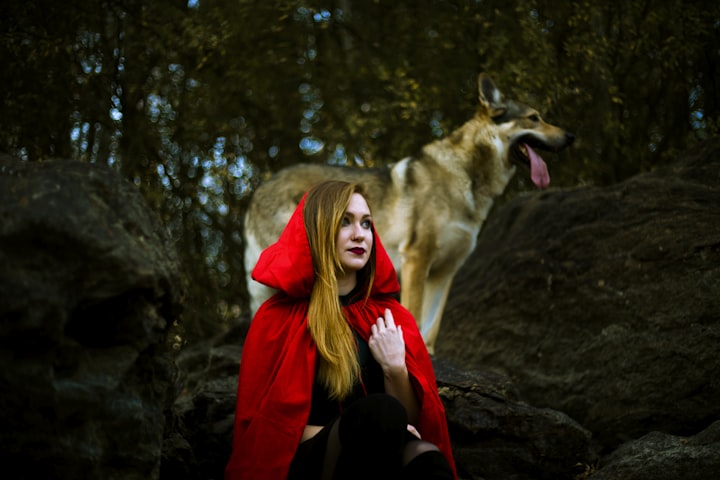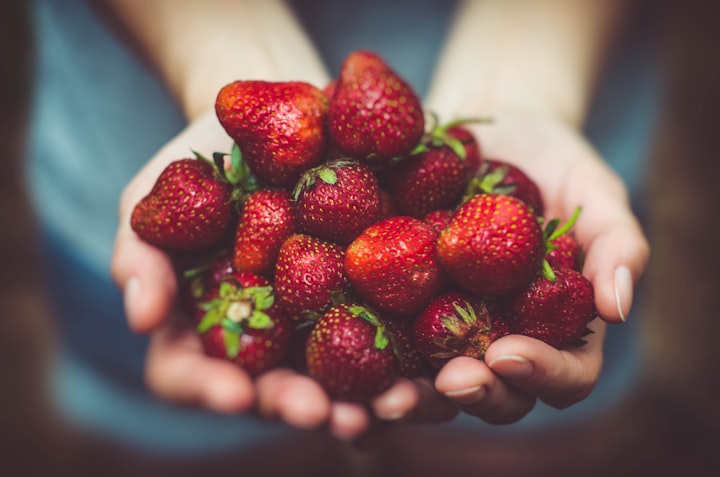The Darker Side of “Little Red Riding Hood”
The innocent tale you remember from your childhood will never seem the same again

Wrapped up in a classic fairytale, Little Red Riding Hood is the ultimate stranger danger story. But stranger danger wasn’t the original objective behind the tale.
The Brothers Grimm version, published in 1812, is the most recognized. In their tale of the girl who meets a wolf in the forest, Little Red was initially named Little Red Cap.
The Brothers Grimm paint a picture of innocence as a young girl skips through the forest on her way to her Grandmother’s house. She stops to talk to a wolf. The wolf appears harmless, but he has an ulterior motive — he’s starving!
“The wolf thought to himself: “What a tender young creature! What a nice plump mouthful — she will be better to eat than the old woman. I must act craftily, so as to catch both.” — Brothers Grimm
Our hungry wolf devises a quick scheme to trick Little Red into taking a longer route. Little Red continues on her merry way skipping through the forest collecting flowers. At the same time, the wolf races ahead and gobbles Little Red’s Grandmother up.
When Little Red comes knocking, she finds the door open but naively steps inside anyway.
There lay her Grandmother with her cap pulled far over her face, looking very strange.
“Oh! Grandmother,’ she said, ‘what big ears you have!”
“All the better to hear you with, my child,” came the reply.
“But, Grandmother, what big eyes you have!” she said.
“All the better to see you with, my dear.”
“But, Grandmother, what large hands you have!”
“All the better to hug you with.”
“Oh! but, Grandmother, what a terrible big mouth you have!”
“All the better to eat you with!” — Brothers Grimm
A passing huntsman happens on the house and rescues Little Red and her Grandmother. Having learned her lesson, Little Red is now wary of strangers.
“As long as I live, I will never by myself leave the path to run into the wood, when my mother has forbidden me to do so.”
It is also related that once, when Red Cap was again taking cakes to the old Grandmother, another wolf spoke to her, and tried to entice her from the path. Red Cap, however, was on her guard, and went straight forward on her way, and told her Grandmother that she had met the wolf. — Brothers Grimm
Like many other fairytales, Little Red Riding Hood has a moral. The wolf represents stranger danger. The use of fantastical elements in the rescue removes children’s immediate fright. This gives the tale a happily-ever-after ending leaving the story on a positive note. Positively is particularly important in children’s tales. This could be why the Brothers Grimm published their sanitized version 1812.
Charles Perrault’s version of Little Red Riding Hood, published in 1697, is darker. It contains sexual overtones which change the dynamics of the moral. Perrault’s version centered around young girls losing their innocence to male predators.
The start of Perrault’s version follows the same pattern as that of the Brothers Grimm. Although, is not a young girl — but a pretty girl. A single word change gives the reader a hint of where this version of the tale is heading.
As Little Red is on her way to her Grandmother’s house, she stops to talk to a wolf. The wolf tricks Little Red and arrives first at the Grandmother’s house.
Little Red’s first clue that not all is right is the tone of her Grandmother’s voice. The tone is much deeper than it should be. But Little Red has come to visit her sick Grandmother, so surely her Grandmother must have a cold and thus a hoarse voice?
The wolf, seeing her come in, said to her, hiding himself under the bedclothes, “Put the cake and the little pot of butter upon the stool, and come get into bed with me.”
Little Red Riding Hood took off her clothes and got into bed. She was greatly amazed to see how her Grandmother looked in her nightclothes, and said to her, “Grandmother, what big arms you have!”
“All the better to hug you with, my dear.” — Charles Perrault
The story part of Perrault’s version ends with Little Red commenting, “Grandmother, what big teeth you have got.” Followed by the wolf gobbling her up.
Not only does this version lack a happily-ever-after ending, but there is also no redemption for Little Red. She doesn’t get a chance to learn from her mistakes. Furthermore, Perrault clearly states the moral he intended at the conclusion of his tale.
Moral: Children, especially attractive, well bred young ladies, should never talk to strangers, for if they should do so, they may well provide dinner for a wolf. I say “wolf,” but there are various kinds of wolves. There are also those who are charming, quiet, polite, unassuming, complacent, and sweet, who pursue young women at home and in the streets. And unfortunately, it is these gentle wolves who are the most dangerous ones of all. — Charles Perrault
Perrault’s version is a direct reflection of the time. A time when young women were required to protect their innocence. The loss of virginity would see their reputation sullied. The “Red Riding Hood” worn by Little Red is a clue to her age, as the color symbolizes her burgeoning womanhood.
This firmly stated moral conclusion leaves no doubt or room for interpretation. The wolf charmed Little Red, then he tricked her before lying in wait in her Grandmother’s bed. The wolf in the story is a magical talking wolf. He is both wolf and man — a predator. When the wolf eats Little Red it is an allegory for rape.
But Perrault was only the first to pen the tale, not the first to tell it. Little Red Riding Hood had a long history as an oral story before 1697. Versions of the tale appeared in many cultures. In writing down the story, Perrault deviated from the oral versions popular at the time. He left out some of the more unsavory details, including cannibalism and overt pedophilia. Instead, he choose to conclude with his firmly stated moral.
Without the changes both Perrault and the Brothers Grimm made, it’s unlikely Little Red Riding Hood would be a popular bedtime story today.
***
This article was first published in Books Are Our Superpower
About the Creator
Sandi Parsons
Sandi Parsons lives and breathes stories as a reader, writer, and storyteller. Subscribe to my newsletter & receive my free ebook The Last Walk → https://bit.ly/3cGvsPB






Comments
There are no comments for this story
Be the first to respond and start the conversation.